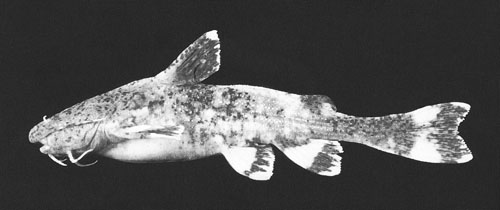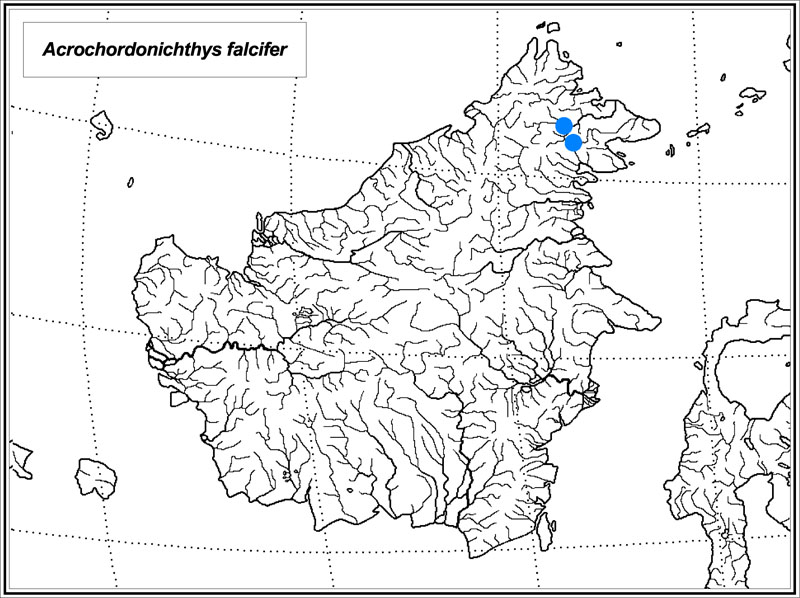
Segama River drainage in Borneo
Paratype, 68.6 mm SL, SSM Uncat.
Acrochordonichthys falcifer Ng & Ng 2001
Identification: Acrochordonichthys falcifer has a moderately compressed body, a wide head (24-29% SL), a comparatively deep caudal peduncle (5-7% SL), and a rounded posterior margin on adipose fin. The head is covered with small, indistinct tubercles. Tubercles on the body are arranged in 5 or 6 horizontal rows on each side. The dorsal surface of the head and body is cream to dark yellow. Small dark brown spots are randomly scattered on the dorsal surface of the head. There is a reticulate pattern on the dorsolateral and lateral surfaces of the body posterior to the dorsal-fin base formed by various shades of brown patches on a cream-colored base. The belly, chest and ventral surface of the head are cream-colored or dark yellow, and lack spots. The dorsal, pectoral, pelvic and anal fins are cream with 1-2 dark brown bands; one band is usually located at the base and the other is at the edge. The cream-colored caudal fin has a dark brown band near the edge and a dark brown patch at the base of the caudal peduncle. The cream-colored or dark yellow barbels and pectoral spines sometimes have dark brown spots on the dorsal surfaces. Some specimens have overall dark brown coloring, dark brown pectoral fins and brown stripes on the other fins. The premaxillary toothband is not exposed when the mouth is closed. The stout pectoral spine lacks serrations on the posterior edge. There are 5-6 branchiostegal rays and 35-36 vertebrae.
Range: This species is found in the Kinabatangan and Segama River drainages, and possibly in the Kayan River drainage in north-eastern Borneo.
Habitat: A. falcifer is found among woody debris in current in creeks and small to medium-sized rivers.
Similar species: A. rugosus, A. chamaeleon and A. pachyderma have a more angular posterior adipose fin margin and a shorter dorsal-fin base. These three species also have larger and fewer uniformly brown blotches on the body and lack spots on the dorsal surface of the head. A. rugosus and A. chamaeleon have serrations on the pectoral spine. A. pachyderma has an overall cream-colored body.
Information from Ng, H. H. and P. K. L. Ng. 2001. A revision of the akysid catfish genus Acrochordonichthys Bleeker. Journal of Fish Biology 58: 386-418.
